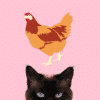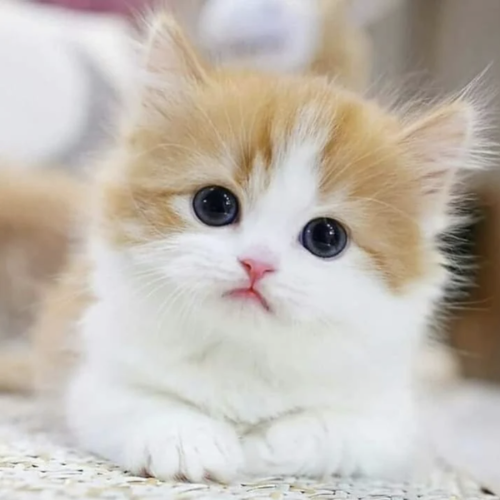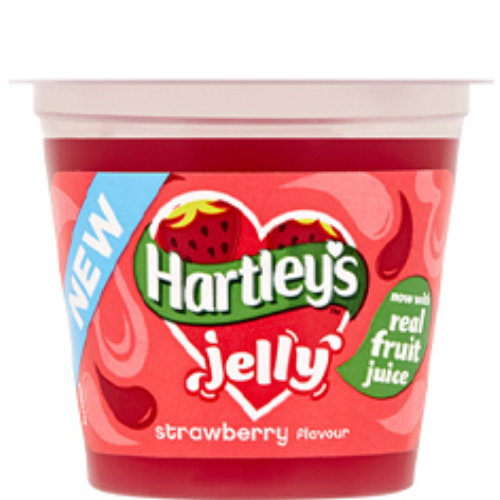Degu Cage Size Advice
Degus although small animals need a decent amount of space! So with that in mind, we should aim for the biggest cage that is convenient for your home. A degu’s cage should not only be extremely wide but consist of many levels.
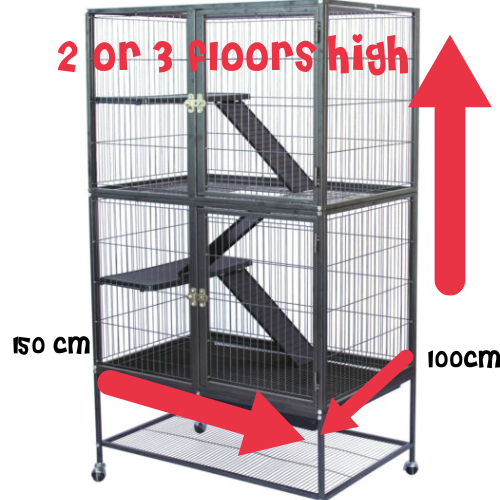
We recommend on average per pair of degus you need around 150cm long by 100 cm deep and 2 to 3 floors high. Obviously, if you have more degus you will need to increase the size of the cage. More degus = bigger cage.
Degus are extremely active animals and if you are considering getting some you really need to understand that they require a significant about of space. So get the biggest degu cage you can!
Buying a Degu Cage Advice
Thinking of getting a Degu cage? Degus may be excellent pets. They are curious, clever, and possess a variety of intriguing vocalizations. Although they are a friendly species, caring for these lively creatures needs much thinking and consideration.
The first step in becoming a responsible degu owner is to provide a secure, enjoyable, and pleasant atmosphere for your Degu. When properly cared for, degus might be one of the most interesting and entertaining little pets to keep, especially if they are given plenty of space to run around and interact with other animals.
If you’ve determined that a degu is a perfect pet for your family, you’ll need to purchase a suitable cage for it, which may be a time-consuming and challenging task. Your Degus cage is your Degus’ home, and it must be equipped with all of the essentials to keep them healthy and happy, as well as clean and free of debris.
Degus require big cages and should not be housed in cages intended for hamsters or other small animals. In contrast to these other pets, the degus enjoy leaping and running and will require plenty of space to do so. It is good to know clearly what cage you require so that you do not have to purchase a new cage within a year or two.

Degus’ Personality and Natural Behavior
Degus are highly social animals who socialize in small groups of one to two males and two to five females, most of whom are related to one another. Each group has its own region, where it spends most of its life. In the natural environment, Degus are semi-fossorial, constructing massive burrow networks that coexist alongside Bennett’s chinchilla rats, with which they share a habitat. Each burrow is divided into chambers, each with a specific function, such as a bathroom area, a nesting chamber, or a storage chamber.
Cages can be used to house pets, depending on size and disposition. When you hear the term “cage,” the image that nearly often comes to mind is a wire cage with horizontal or vertical bars. Typical Degu cages are made up of metal or wood.
What Is a Vivarium?
A vivarium is an enclosure, tank, or structure usually made up of glass, designed to keep animals in semi-natural circumstances. Actually, Vivarium is a less well-known term among the general public.
Keep a good eye on your Degu if you place your pet in a vivarium because when exposed to direct sunlight or during very hot weather, glass enclosures can become quite hot very rapidly. It is possible for your degus to suffer from heat exhaustion and other related health concerns if they become overheated.
Which Is Better: A Cage Or A Vivarium?
If you are unfamiliar with degu housing or are inexperienced with animals, it is strongly recommended that you utilize a cage rather than a vivarium.
The following are the advantages of utilizing a cage rather than a vivarium for housing degus:
- The cage provides the best ventilation in contrast to the Vivarium
- You can modify and make different levels in cages with little effort, but in the Vivarium, it is very tough to do that due to the glass structure
- Cage also provides Degu the more security as they are made up of ash metal wire with metal rods, so Degu can not escape from that easily
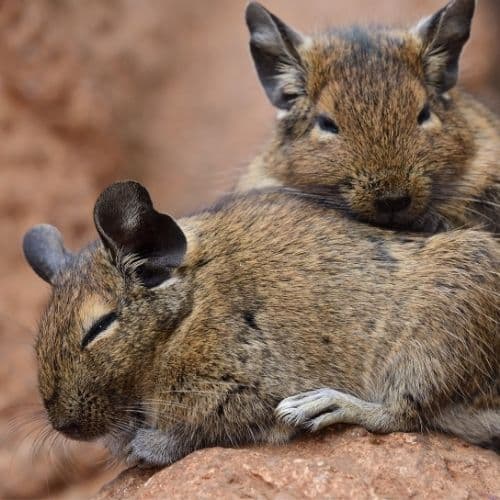
The Housing of Pet Degus
Pet Degus require a huge cage. A minimal cage size of 24 inches x 18 inches x 24 inches should be sufficient for two degus to live happily together—the greater the size, the better. Multi-level cages designed specifically for ferrets or chinchillas are the best option.
Degus have a strong desire to chew. It’s important to use wire or metal to construct the cage; they can chew their way through wood and plastic if not. A degu cage should include a nesting box that is designed to look like the burrows that degus build in the wild. Ideally, a 6-by-8-inch wooden box with a level roof on which to sit should work.
Optimal Degu Cages
Optimal Degu cages should be built of metal because degus are capable of chewing through the plastic. It should be at least 90cm deep, 60cm wide, and 120cm tall (the more, the better) to accommodate two to five degus. These dimensions will ensure that the Degus has plenty of space to explore.
In order to avoid bumblefoot, the cage’s base should be made of solid metal, with the sides made of wire, with the wire allowing no more than a 2cm x 2cm gap to avoid chances of escape for young Degus. A glass aquarium-style cage is only ideal as a base since there have to be lots of airflow and opportunities to climb and explore. Wood shavings should be placed at the bottom of the cage to promote comfort and absorption.
Optimal Degu Cages Characteristics
The following characteristics must be present in any ideal Degu cage:
Nesting Material and Sleeping Items
Your pet must have appropriate bedding in its nest box to be warm and comfortable during the night. Shredded paper bedding is one of the best-recommended bedding. Other types of bedding, such as vegetable fiber/cotton wool type bedding, can be suffocating and harmful if swallowed by Degus’. And the wood shavings type bedding can cause allergies due to the dust contained within it. So, always go for shredded paper bedding to provide comfort to your Degus.
Branches and Shelves
For optimal Degus cages, it is vital to provide shelves within the cage to give a place for them to rest their feet when they feel uncomfortable. These can be simple pieces of wood fastened to the side of the cage and rested on.
Alternatively, you may introduce natural branches in your Degu cage, which will be more realistic and provide more exploration for your Degus. These must be purchased from a respected pet store to verify that they are Degu safe. Tree branches might be used if they meet the requirements, including the wood type, being fully natural, containing no pesticides, and being completely cleaned and baked to kill any fauna or larvae.
Degus Require Cage Washing as Well as Dental Maintenance
The Degu’s front biting teeth are constantly developing, just like the teeth of other rodents. Don’t forget to offer your degus with appropriate chewing blocks or objects; otherwise, they may naturally wear down their teeth. Because your Degu will be unable to feed correctly if his teeth are overgrown, this might result in health concerns.
Every week, degus should be given a sand bath, which will help maintain their fur clean and in excellent shape. It is best to use a porcelain or stainless bath filled with chinchilla dust to a depth of around 8 cm. Ordinary sand should not be used since it will be excessively abrasive and may cause harm to your pets’ fur.
It is important to note that the sand/dirt bath should only be left in your Degu’s cage for a duration of 12 minutes per day, as too much bathing can cause the animals’ fur to become brittle and thin over time. If you keep the degus in the cage for an extended period of time, it will begin to use the sand/dirt as a litter box.
Degu Cage Maintenance
You should clean and disinfect the cage and its base using a pet-safe disinfectant at least once a week, as well as any other metal, glass, wooden, plastic, or ceramic surfaces, as necessary. Broken or poorly worn items that pose a danger should be removed as soon as possible and suitable replacements should be found. Spot cleaning must be done regularly in areas where your Degu excretes and urinates to avoid odors and bacteria from developing.
If your Degu becomes allergic to certain disinfectants, it is recommended that you discontinue use of them immediately.
The Location of the Degu Cage
Cage location is one of the most significant considerations. The following two factors must be considered while selecting a place for your degu cage.
- Placement: The placement of cages is also vital. The cage should be placed at waist level or higher since degus are considered prey animals. Their basic instinct is to flee or bite a predator. Because rodents can’t see well, they may fear you as a predator. So, try to keep the Degu cage level at your waistline. It is best to place for both you and your Degu to get comfortable with
- Exposure to sunlight: Degus are both diurnal and fidgety as pets. They are active throughout the day, having peaks of activity occurring at dawn and dusk. Even while degus will adapt to your schedule once they are in captivity, they will also utilize light as a guide for their sleeping patterns. Place the degu cage in an area where the degus will have a typical day/night light cycle. Never leave the cage exposed to direct sunlight! Direct sunshine may quickly heat up a cage, causing your degus to become trapped in their nesting boxes and suffer from heatstroke as a result.
- Temperature: Degus reside in an area where temperatures may reach dangerously high levels. However, when the temperature rises too high, they become less active and prefer to remain in their cooler burrow to avoid the heat. Degus are vulnerable creatures that can experience heat stroke if exposed to extreme temperatures for long periods of time. They can get pneumonia if the cage is near a cold spot. Similarly, heatstroke may affect them if their cage is placed in a hot place.
Where Can You Find Some Cool Degu Cages?
Now that you have some basic knowledge of maintaining degus, let’s look at one of the best degu cage options.
These cages are available on Amazon.com, and we’ve included links to each one. Ordering is simple!
Midwest Deluxe Critter Nation Degu Cage
MidWest Homes for Pets’ Critter Nation is the perfect Degu environment! This cage was created to keep your Degys happy and tidy while keeping you accessible.
This cage comes with three ramps, two resting shelves, and two easily removable foundation pans. The full-width twin doors allow for simple cleaning and feeding. The large shelf and polycarbonate pan floor gives your Degu plenty of room to play without risking a tumble.
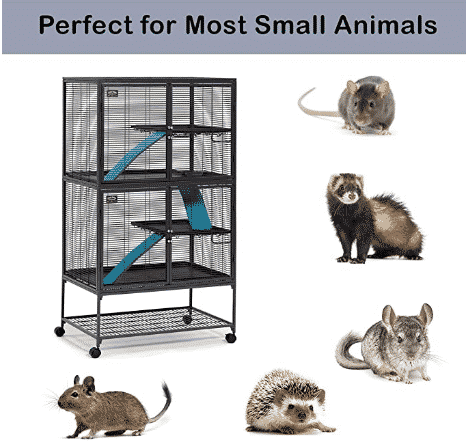
Prevue Pet Products Deluxe Critter Cage
The Prevue Deluxe Critter Cage provides a safe and large habitat for Degus. It has five levels with twist knobs, three ramps, and a luxurious hammock. Cage doors close simply and firmly with a simple two-finger locking system. Doors swing open wide, allowing complete cage access for pet interaction or cleaning. It is one of the best fits for Degus.
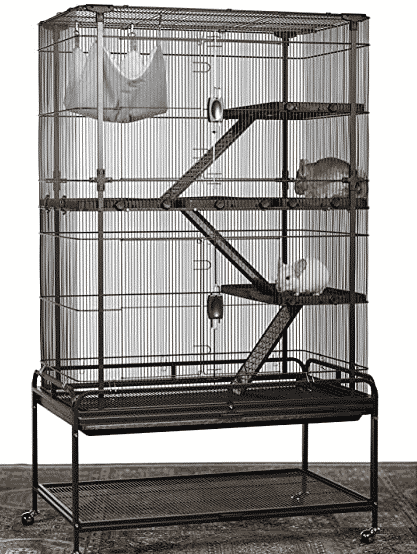

Doctor of Veterinary Medicine (D.V.M.) at Nation Taiwan University,Master of Science (M.S.) in Biomedical Engineering at National Taiwan University of Science and Technology

